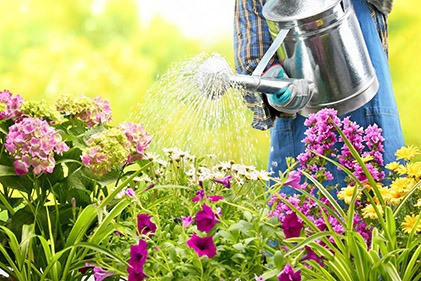By Judy English
Plant Clinics
9 a.m.-1 p.m. Monday at the courthouse in Port Angeles and on Saturday (beginning May 23) at Master Gardener Demonstration Garden, 2711 Woodcock Road,
Sequim. Plant Clinic Helpline: 417-2514.
Brown Bag Seminar
Second and fourth Thursdays at noon, Clallam County Courthouse (commissioners meeting room), 223 E. Fourth St., Port Angeles. Attendees are welcome to bring lunch.
May 14: Composting, Meggan Uecker, Clallam County Waste Reduction Coordinator
May 28: Berry Pests, Diseases and Cultural Problems, Jeanette Stehr-Green
Class Act Seminar
First and third Saturdays from 10-11 a.m., at the Master Gardener Demonstration Garden.
May 23: “Strawberry Fields Forever” with Jeanette Stehr-Green
General tips
May can be the beginning of drier weather. Water deeply but infrequently as needed. Wait until fall to plant new trees and shrubs. Watch for evidence of pests. Hose aphids off plants with a strong stream of water. Attract bees by allowing flowering weeds, especially mustards, to grow in out-of-the-way areas.
Bulbs: Map the location of spring-flowering bulbs as they finish blooming, noting color combinations, to make fall planting easier. Plant and fertilize with fast-acting fertilizer, dahlias, begonias, gladioluses, cannas, calla lilies and crocosmia. Remove spent bulb seedpods and allow bulb foliage to mature.
Flowers: Continue to fertilize roses every four to six weeks through July. Check roses for black spot, rust and powdery mildew; remove and discard affected leaves and stems. Secure canes of climbing roses. Plant a mix of annuals, perennials and herbs in your garden or in patio containers.
Shrubs: If shrubs are slow to recover from winter weather, wait until June before removing plants or pruning out dead wood. Remove flower heads from rhododendrons after blooms fade, being careful not to harm the new buds; deadheading is not necessary but improves appearance and conserves energy which otherwise goes into seed production. Trim spring-blooming shrubs after bloom; fertilize as needed.
Trees: Fertilize trees if there are signs of nutrient deficiency. Prune spring-flowering ornamental trees after bloom.
Fruit trees: Top dress fruit trees with fertilizer at the drip-line if last year’s growth was less than 8 to 12 inches. If trees have had past problems with brown rot, scab or mildew, spray them with lime-sulfur or other fungicide according to the product’s label; do not apply fungicides while trees are in bloom. Thin fruit on apple and pear trees 40 to 60 days after full bloom.
Berries: Make sure berry plants get at least 1 inch of water each week. Fertilize blueberries with ammonium sulfate or elemental sulfur. Tie up new (first year) raspberry canes.
Vegetables: Harden off vegetable starts and plant them into the garden by the end of May. Sow cool-season vegetables (beets, chard, lettuce, onions, peas, potatoes, radishes, spinach, carrots and parsnips) every three weeks. Direct sow pole beans, bush beans and corn when soil is at least 50 degrees at planting depth. Delay transplanting tomatoes, peppers, squash and cucumbers until soil temperatures are above 60 degrees. Use row covers to protect spinach, chard and beets from leaf miners. Check cabbage family crops for cabbageworm.
Lawns: Try to avoid watering lawns this year to conserve water. Mow lawns every five to seven days. Leave grass clippings on lawn to decompose and return nutrients to the soil. Dig out dandelions to prevent seeding.
And more
Join us on Wednesdays this month to learn more about three local gardening challenges: slugs, deer and leaf defoliators.
Contributions to this article made by Washington State University-certified, Clallam County Master Gardeners
Spring-flowering bulb care
Remove wilting blooms to conserve the bulb’s energy.
Fertilize bulbs after blooming with a 5-10-10 granular fertilizer.
Allow bulbs to regenerate for at least six weeks after blooming before removing spent foliage. Do not twist or braid foliage.
Water bulbs regularly until foliage withers but keep dry during the summer. If beds are irrigated, tulip bulbs are best dug up and stored until fall.
Transplant bulbs or dig and divide crowded bulbs after the foliage has died back and replant immediately or store until fall.
Remove and discard diseased bulbs. Do not plant new bulbs where you found diseased bulbs.
If storing, keep bulbs in a cool place (60-65 degrees) in peat moss, sawdust, perlite, vermiculite or dry sand.


